This entry is part of a series. For a listing of all entries in the series, go to the Index. Unless otherwise noted, all Bible quotations are from the New Revised Standard Version (NRSV).
 I realize that I apologized in the previous installment of this series, but now I must do it again. The other project I mentioned in that previous post took up a lot of my time, so I fell behind in this series. And with the hiatus, I've lost my momentum a bit, so please bear with me as I get back into the swing of this. I fear I may have made this entry a bit too long (although there was a lot to cover), so hopefully next week I'll be back in better practice.
I realize that I apologized in the previous installment of this series, but now I must do it again. The other project I mentioned in that previous post took up a lot of my time, so I fell behind in this series. And with the hiatus, I've lost my momentum a bit, so please bear with me as I get back into the swing of this. I fear I may have made this entry a bit too long (although there was a lot to cover), so hopefully next week I'll be back in better practice.
Chapters 11 through 20 of 1 Samuel continue with the story of Saul, and the beginning of his falling out of favor with God. They also introduce one of the most famous characters from the Bible, David, including the well known story of David and Goliath.
1 Samuel, Chapter 11
Chapter 11 continues the story that was introduced in the end of the previous chapter. King Nahash of the Ammonites is attempting to conquer the Gadites and Reubenites. But the elders of the city of Jabesh have managed to convince him to give them seven days to look for help among the Israelites. A conquering giving a city time to look for help seems odd, but I guess the reason Nahash would allow something like that is that the Jabehites promised to surrender without a fight if no help came.
Now came a passage showing that this story was independent of Saul's coronation in the previous chapter. Rather than a messenger going to inform him directly, the messengers simply spread the message in his town, and he didn't find out what was going on until he came in from the fields and asked what all the commotion was about.
Once Saul heard what was going on, he sent out messengers to all of Israel to gather soldiers, but he sent the message in a rather bloody way. He slaughtered a yoke of oxen and cut them up into pieces, sending the pieces with the messengers, along with the message that whoever didn't join with him would have their own oxen slaughtered in a like manner.
So a force was assembled and they beat the Ammonites in battle. There was a short section where Saul deigned not to kill the people who had previously questioned his kingship, and then there was more ceremony and sacrifices.
1 Samuel, Chapter 12
Samuel gave a speech to the Israelites, first establishing his own reputation, then giving a very brief summary of what the Lord had done for the Israelites, before getting to his main point. The Israelites had been wicked by asking for a king, since the Lord was supposed to have been their king. As punishment, God sent a thunderstorm to destroy their wheat crop. The Israelites asked Samuel to pray to God to ask Him for forgiveness, and Samuel told them not to worry because God would "not cast away his people, for his great name's sake, because it has pleased the Lord to make you a people for himself." If they would "Only fear the Lord, and serve him faithfully with all your heart," they would be okay.
1 Samuel, Chapter 13
Chapter 13 began in a strange way, "Saul was ... years old when he began to reign; and he reigned for ... and two years over Israel." The footnote explains that the numbers were missing from the oldest Hebrew text, and that the verse was missing from the Septuagint.
This was the chapter where Saul fell out of favor with the Lord. After some small battles with the Philistines where the Israelites were victorious, both the Israelites and the Philistines gathered in larger numbers. The Philistines amassed a greater force, and some of the Hebrews went into hiding.
Apparently, Samuel had given Saul instructions to wait seven days, at which point Samuel would join Saul. But after waiting the appointed time, Samuel hadn't shown up, and Saul's troops were deserting him. So, he took matters into his own hands, and offered a burnt offering to the Lord on his own. As soon as he had, Samuel arrived, and told Saul he'd made a huge mistake, "You have done foolishly; you have not kept the commandment of the Lord your God, which he commanded you. The Lord would have established your kingdom over Israel for ever, but now your kingdom will not continue..." After telling Saul that God would find a new, more worthy ruler, Samuel left.
The chapter closed with a mention of Philistine raiding parties, and a description of how most Hebrews were unarmed because of Philistine laws that they weren't allowed to own weapons. Only Saul and his son, Jonathan, had sword and spear.
1 Samuel, Chapter 14
Jonathan snuck out of the Hebrew camp into the Philistine camp with his armor bearer, but without telling anyone where he was going. Trusting in God, they showed themselves to the Philistines, and started fighting. After killing 20 of the enemy, the Philistines began to panic.
The Hebrew camp saw what was going on, but not who was responsible. After taking a roll, they realized it was Jonathan. While this was going on, the panic increased in the Philistine camp, so the Hebrews rallied and charged into battle, defeating the Philistines.
Saul had made a rash oath that day, "Cursed be anyone who eats food before it is evening and I have been avenged on my enemies." So, all of his troops were famished and exhausted, and not able to slaughter as many Philistines as they would have, otherwise. However, Jonathan hadn't heard his father's oath, and ate a bit of honey before he was told of it.
That night, the troops slaughtered and killed some animals, but they didn't follow the Kosher rules and drain the blood. So, Saul had a large stone brought before him that he could use as an altar to slaughter the animals properly. After that, Saul wanted to go after the Philistines to complete the slaughter of the enemy soldiers, but first he had the priest check with God to see what to do. But God didn't answer, so Saul gathered the leaders to figure out what sin had been committed. Through lots, it was determined that the guilt fell on Jonathan, for the honey he'd eaten earlier in the day. During the course of casting lots, Saul had said that whoever was found guilty would be killed, but the people would have none of it once it was discovered that Jonathan was the guilty party. "So the people ransomed Jonathan, and he did not die." The Israelites didn't chase down and slaughter the Philistines that night.
Just think about this story. Would an all powerful god really be so concerned with the letter of the law rather than the spririt. Jonathan had no idea he was breaking an oath when he ate the honey, yet God was willing to punish the Israelites for it, and it even required a ransom for Jonathan to not be killed.
The chapter closed by describing how Saul fought valiantly for Israel for the rest of his kingship, defending the Israelites from their enemies. This last part seems to be from a tradition where Saul was held in high esteem, not as the villain he becomes in the Bible.
1 Samuel, Chapter 15
Chapter 15 opened with Samuel relaying a message from the Lord to Saul, "I will punish the Amalekites for what they did in opposing the Israelites when they came up out of Egypt. Now go and attack Amalek, and utterly destroy all that they have; do not spare them, but kill both man and woman, child and infant, ox and sheep, camel and donkey." Talk about holding a grudge - the Amalekites alive at the time had nothing to do with the Hebrews during the Exodus, but collective guilt is a theme of the Bible.
So, Saul attacked the Amalekites, but he didn't utterly destroy everything in the battle. He captured the king alive and took the best of the livestock, but killed everyone else and destroyed everything else. On his return, when Samuel asked him why he hadn't done as he'd been told, Saul said that he had brought the best back to be sacrificed to God in Gilgal. But Samuel told him that he was wrong, and that he should have followed the Lord's instructions exactly. At the end of the lecture, Saul was told, "Because you have rejected the word of the Lord, he has also rejected you from being king." (again, despite being told nearly the same thing in the last chapter).
So once again, this book indicates that blind obedience is more important than intent.
After Saul poured is heart out, Samuel agreed to worship with him one more time. Then Samuel took care of King Agag, he "hewed Agag in pieces before the Lord".
The chapter closed by saying that "Samuel did not see Saul again until the day of his death," which will be contradicted shortly, and also that "the Lord was sorry that he had made Saul king over Israel."
1 Samuel, Chapter 16
God sent Samuel to Jesse the Bethlehemite the find the next king of Israel. Samuel had each of Jesse's sons come before him, and each time God told Samuel that it wasn't the right one. After seven sons had been rejected, Samuel asked Jesse if he had any more sons, and learned of David, who was out "keeping the sheep". Once David was brought before Samuel, God told him that this was the right boy, so Samuel annointed him the horn of oil he'd brought along.
After the Lord had left Saul, "an evil spirit from the Lord tormented him." (Note that this evil spirit came specifically from God.) Saul's servants told him to look for someone who could play the lyre to comfort him. Well, it just so happened that a certain son of Jesse was well known as a lyre player. So Saul sent for him and David entered into Saul's service. "Saul loved him greatly, and he became his armour-bearer." David remained in service to Saul, and would play the Lyre to comfort him whenever he was tormented by the evil spirit.
1 Samuel, Chapter 17
Chapter 17 contains the famous story of David and Goliath. The Philistines had gathered for battle, and the Israelites gathered to confront them. A mighty Philistine warrior, Goliath, came out of the Philistine camp and challenged the Israelites to single combat, "If he is able to fight with me and kill me, then we will be your servants; but if I prevail against him and kill him, then you shall be our servants and serve us." According to the New Oxford Annotated Bible (NOAB), Goliath's description is a bit anachronistic - his armor didn't fit any particular period, but was a hodge podge of different items. Additionally, the description of his height as "six cubits and a span" (9'-9") is questionable. The Dead Sea Scrolls and numerous other versions describe it as "four cubits and a span" (6'-9") - still very tall, but more realistic.
Next, David was introduced - an indication that this story was originally independent of the earlier account of David. In this story, David was still taking care of his father's sheep rather than serving Saul as his armor-bearer.
Twice a day for forty days, Goliath repeated his challenge. One day, David went to the Hebrew camp to take some supplies, and while he was there he heard Goliath's challenge. He began asking around about it, "For who is this uncircumcised Philistine that he should defy the armies of the living God?" His brothers told him not to be rash, but eventually Saul heard of this youth. Once Saul saw that David was only a boy, Saul told David that he was too young to fight. But David responded that he had already defended his father's flock against bears and lions, so he was not defenseless. So Saul allowed David to go fight Goliath.
After a somewhat comical episode where Saul tried to dress David in his armor and David was unable to walk, David went out to face Goliath armed with only a staff, his sling, and his faith. After exchanging threats back and forth, they approached each other to do battle, and David used his sling to strike Goliath in the head with a stone, killing him. However, there's a bit of a discrepancy in this section, as this is immediately followed with, "Then David ran and stood over the Philistine; he grasped his sword, drew it out of its sheath, and killed him; then he cut off his head with it." So there are two verses saying Goliath had been killed, possibly from different traditions. According to Wikipedia, it's also possible that in the original story, David struck Goliath in the leg, causing him to stumble, after which he killed him with the sword.
With the death of Goliath, the Philistines fled, while the Israelites pursued and killed many of them. David took the head of Goliath back to Jerusalem, but kept his armor for himself. The chapter closed with Saul questioning David about who his father was - another indication that this story was independent of the previous chapter.
After thinking about this story a little bit, it seems even more improbable as presented here. Given the stakes involved in the battle, if David really was such an unlikely hero, what king would have allowed David to represent all of Israel against Goliath?
It's also worth mentioning that a much shorter version of this story appears in 2 Samuel 21:19, but with Elhanan son of Jaare-oregim being the one to kill Goliath. If I had to guess, I'd wager that the Elhanan version was the earlier version (more substantial than presented in 2 Samuel), and that in time it got attached to David's legend.
1 Samuel, Chapter 18
When David met Saul's son, Jonathan, the two became fast friends, "the soul of Jonathan was bound to the soul of David, and Jonathan loved him as his own soul." In fact, Jonathan even presented David with his robe, his armor, and his weapons - all symbols of the monarchy.
On the return from the battle with the Philistines, the women of the towns would sing, "Saul has killed his thousands, and David his tens of thousands." This is another indication of yet another source. Whereas the previous chapter presented David as the young, unlikely hero who only fought with Goliath, this verse shows him as a mighty warrior who killed many of the Philistines. And of course, Saul was jealous with David over this, "So Saul eyed David from that day on."
The next few verses were a short aside, "The next day an evil spirit from God rushed upon Saul", and he actually tried to kill David with his spear, throwing it at him, but David was able to escape.
To remove David from his presence, Saul made David a commander in the army, hoping that he would die in battle, but David had great success in that and just made Saul even more jealous.
Next, Saul promised David one of his daughters in marriage, but then gave her to someone else instead (still with the sexism and ownership of women).
But another of Saul's daughters, Michal, was in love with David, and so Saul thought to use this to his advantage. He promised her to David, but only if David would obtain for a wedding present "a hundred foreskins of the Philistines, that he may be avenged on the king's enemies." Again, Saul was hoping that the Philistines would kill David. But of course, David was successful, killed the hundred Philistines, cut off their naughty bits and delivered them to Saul. The wedding went through, and Saul became even more afraid of David.
The chapter closed with a verse describing David having more military success against the Philistines.
1 Samuel, Chapter 19
Saul's jealousy against David was reaching ever higher levels. Now, instead of just putting David in dangerous situations, he was plotting to actively kill him. Initially, Jonathan was able to intervene and keep Saul from following through on his talk. But after another battle with the Philistines, "an evil spirit from the Lord came upon Saul" yet again, and he again tried to kill David while David was playing the Lyre. David wasn't safe even in his house as Saul had sent guards to watch him so that David could be killed in the morning, so David had to escape from his house in the middle of the night. His wife aided him by making a lump in his bed from an idol and decorating it with a head of goats' hair and some clothes to fool the guards into thinking he was still there.
After fleeing the city, David met up with Samuel, and the two of them went off to Naioth. When Saul learned where they were, he went to the city, but "fell into a prophetic frenzy" before Samuel, despite what was said in Chapter 15 about them never seeing each other again. Saul stripped his clothes and "lay naked all that day and all that night", giving another etymology for the expression, "Is Saul also among the prophets?"
1 Samuel, Chapter 20
After fleeing from Naioth, David met up with Jonathan. But there's a bit of discontinuity here. Despite David being on the run for his life in the previous chapter, in this one, he's expected to be eating meals with King Saul in celebration of the new moon. However, David suspects that Saul is planning to kill him, so he decides to hide in a field until he's sure of what Saul is going to do. Jonathan is going to be the go between, making excuses for David's absence at the table, and then judging his father's reaction. They arranged a signal whereby David would know if it was safe to come out of hiding or not - in three day's time, Jonathan would return to where David was hiding to do some shooting with his bow and arrow. If he shot them short of the servant, it would be safe for David, but if he shot them long and told the servant to go retrieve them, David would know that it wasn't safe.
On the first day of the new moon, Saul wasn't suspicious of David's absence, assuming that he was just unclean and couldn't enter the city. But on the second day, his suspicions were raised. Jonathan made an excuse for David that he'd gone back to Bethlehem to be with his family, which greatly angered Saul that Jonathan would take David's side. Saul tried to kill Jonathan with his spear, but Jonathan escaped.
On the third day, Jonathan went to the field to give the signal to David that it wasn't safe. But immediately afterward, David came out, and the two had a long goodbye before David left. This last part must have been tacked on, as it makes their whole signaling system completely superfluous.
---
These chapters weren't as coherent as the previous ten chapters from this book. There were a lot of indications that they were made from combining multiple sources, and places where it just completely changed the continuity of the story. However, I suppose that is to be expected for a figure as important as David - there would be many legends associated with him, even if they were contradictory. The other aspect of these chapters that struck me was God's reaction to Saul - even though Saul often had good intentions, he wasn't obediently following the letter of the Lord's commands, and so he got into trouble for it.
New Revised Standard Version Bible, copyright 1989, Division of Christian Education of the National Council of the Churches of Christ in the United States of America. Used by permission. All rights reserved.
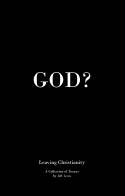 I've published a second edition to my book, Leaving Christianity: A Collection of Essays ($4.99 from LuLu). To paraphrase from my own review* of the book, this book is a collection of essays I wrote during and after my 'deconversion' from Christianity. I kept it to a length that should be informative without being overwhelming (~100 pages), so it could be a good primer on non-belief. I've given copies of the first edition to several friends, all of whom have said it was interesting. Obviously, you wouldn't expect friends to tell you your book was horrible, but one of them even went out and bought 10 copies of it so that he could give it away to other people.
I've published a second edition to my book, Leaving Christianity: A Collection of Essays ($4.99 from LuLu). To paraphrase from my own review* of the book, this book is a collection of essays I wrote during and after my 'deconversion' from Christianity. I kept it to a length that should be informative without being overwhelming (~100 pages), so it could be a good primer on non-belief. I've given copies of the first edition to several friends, all of whom have said it was interesting. Obviously, you wouldn't expect friends to tell you your book was horrible, but one of them even went out and bought 10 copies of it so that he could give it away to other people.
 Chapter 21 through 31 are the final chapters of 1 Samuel. They continue the story of the conflict between David and Saul, culminating in Saul's death. The stories in these chapters aren't as famous as other Bible stories, but I personally liked the one where a medium was able to bring somebody's spirit back from the dead.
Chapter 21 through 31 are the final chapters of 1 Samuel. They continue the story of the conflict between David and Saul, culminating in Saul's death. The stories in these chapters aren't as famous as other Bible stories, but I personally liked the one where a medium was able to bring somebody's spirit back from the dead.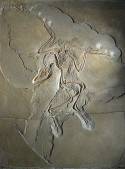 One of my habits when I'm getting ready to write a blog entry is to do a quick Google search to see if anyone's written anything along the same lines, before. If I find something that's very similar to what I was intending on doing, then there's no reason for me to repeat what's already been done. Sometimes I'll change direction on what I was going to write, and sometimes I'll just table the concept entirely.
One of my habits when I'm getting ready to write a blog entry is to do a quick Google search to see if anyone's written anything along the same lines, before. If I find something that's very similar to what I was intending on doing, then there's no reason for me to repeat what's already been done. Sometimes I'll change direction on what I was going to write, and sometimes I'll just table the concept entirely.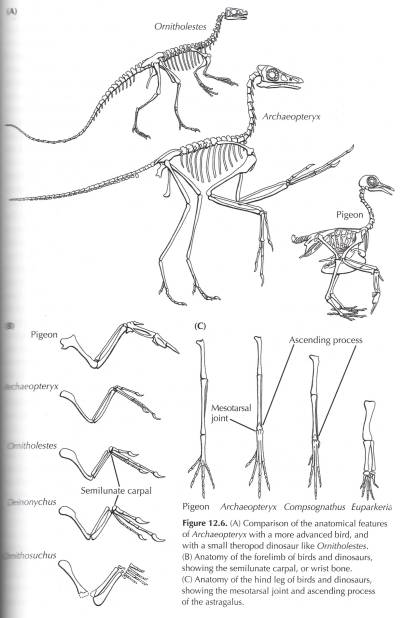
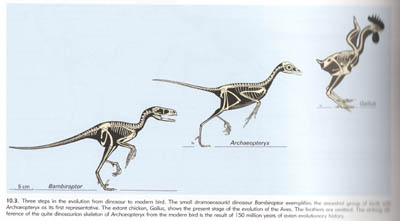
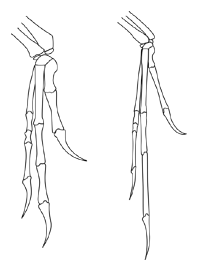
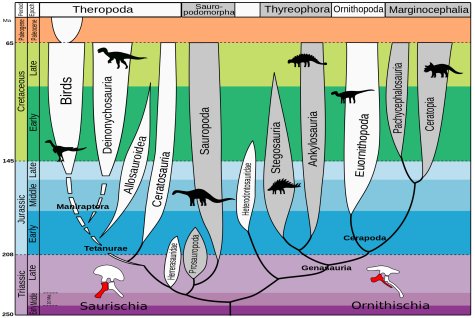




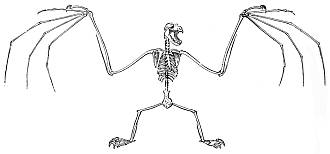
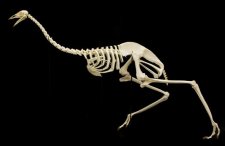
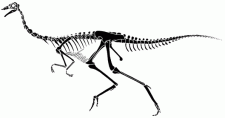
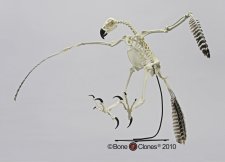
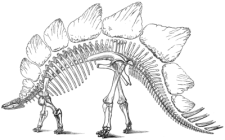
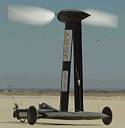 About two years ago, I wrote about a very counterintuitive concept in the entry,
About two years ago, I wrote about a very counterintuitive concept in the entry, 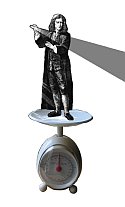 I got into a conversation about units the other day (yeah - some of my friends are as nerdy as me), and it got me to thinking about Newtons. They're named after the guy, but not based on him in any physical sense. But what is the physical relationship? Where would you have to go for Newton to weigh a Newton?
I got into a conversation about units the other day (yeah - some of my friends are as nerdy as me), and it got me to thinking about Newtons. They're named after the guy, but not based on him in any physical sense. But what is the physical relationship? Where would you have to go for Newton to weigh a Newton? Whew. I just finished up with a hugely busy few weeks at work. I worked 85 hours last week, just to give an idea of how busy (I even took off Memorial Day since we had family visiting). If I wasn't working through my lunches, I was spending them mindlessly relaxing. So, I managed to get a few blog posts done in that time, but not as many as normal, and I certainly fell behind in my
Whew. I just finished up with a hugely busy few weeks at work. I worked 85 hours last week, just to give an idea of how busy (I even took off Memorial Day since we had family visiting). If I wasn't working through my lunches, I was spending them mindlessly relaxing. So, I managed to get a few blog posts done in that time, but not as many as normal, and I certainly fell behind in my